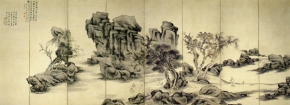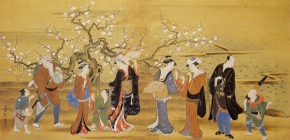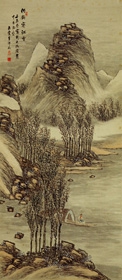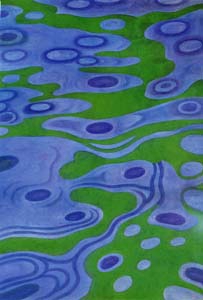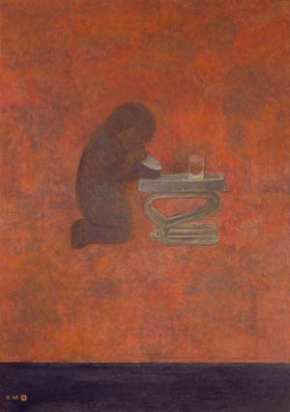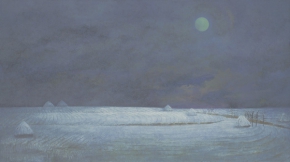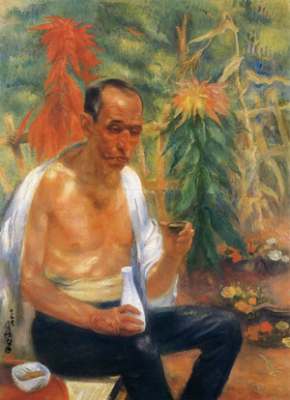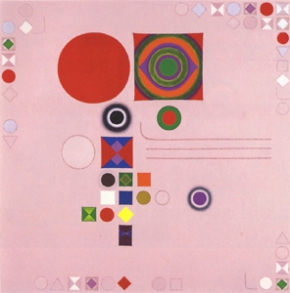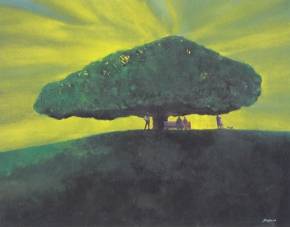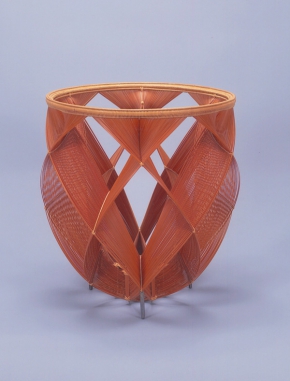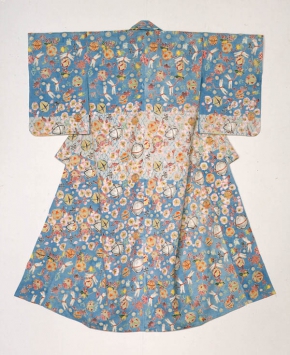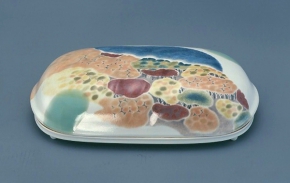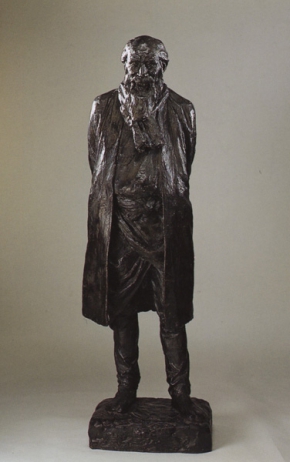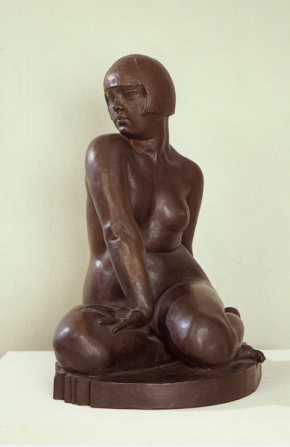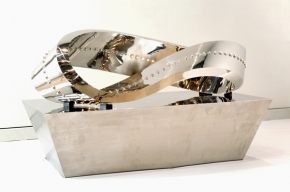Collection
OPAM Collection
Since the Edo Period, a great number of artists have emerged in Oita, leading to a rich cultural climate of “romanticism.”All of these artists helped power modern Japanese art and were truly great artists.
OPAM’s art collection is an inheritance of artwork and materials amounting to 5000 pieces collected over thirty-seven years by Oita Prefectural Art Center. These works have been preserved as treasures, and OPAM introduces, their appeal widely disseminated throughout Japan and the world.
Oita’s Modern Art
From the Edo period to the Meiji and Taisho periods, painters of the Nanga School were popular in Oita, and created a unique culture of the region, known as the “Bungo Nanga” School.
OPAM possesses a rich collection of materials, such as paintings and calligraphic works, that recall Tanomura Chikuden (1777-1835), the man who laid the foundations for this school of art, and who was also an historian. Additionally, OPAM introduces the public to the works of Tanomura’s apprentices, Takashi Sohei and Hoashi Kyou, and art pieces and materials from artists and scholars who were active in each region of Oita Prefecture, as well as to artists connected to the world of ukiyo-e wood block prints.
Tanomura Chikuden Screen depicting an Honorable Guest listening to a Japanese Zither 1822
Utagawa Toyoharu Enjoying the Plum Blossoms around the Kansei period
Takahashi Sohei Alone Fisherman on the Cold River 1832
Oita’s Modern Japanese Paintings
The highlight of the collection is the number of representative works and the large amount of rare rough sketches of the artists Fukuda Heihachiro (1892-1974), an artist who thoroughly mastered realism and established a decorative painting style, and Takayama Tatsuo (1912-2007), an artist who lead Japanese post-war painting circles with his painting style filled with the depth of existence; a style which he developed after looking hard at life and death.
Oita’s Western-Style Paintings
Artists who produced representational paintings and were active in the Imperial Academy Exhibitions and the Japan Fine Arts Exhibitions and who were centred around Katata Tokuro (1889-1934), a painter active in the painting circles of the Taisho era, and artists, such as Sato Kei (1906-1978) and Ujiyama Teppei (1910-1986), who worked amongst non-establishment art circles, and who attempted to establish their own original styles.
Katata Tokuro Lunch Break 1926
Ujiyama Teppei Dynasty 1974
Itozono Wasaburou Large Tree on a Hill 1991
Oita’s Crafts
OPAM possesses a number of pieces of bamboo craft pieces from within and outside of the prefecture, centering on the first artist designated a Living National Treasure in bamboo crafts field, Shono Shounsai (1904-1974). OPAM is proud of its content-filled collection of numerous works. OPAM has a large amount of craft pieces such as Hita’s ontayaki (onta ware) and Kawai Seitoku’s (1927-2010) ceramic ware, Yamanaka Koho’s (1889-1973) dry lacquer, and Furusawa Machiko’s (1933-) dyed patterns.
Shono Shounsai Kagero (Heat Haze) 1958
Furusawa Machiko Mariko in Spring and Autumn 1996
Kawai Seitoku Coloring 1990
Oita’s Sculptures and Three-Dimensional Works
The works of Fumio Asakura (1883-1964), an artist who was a leader in the world of sculpture from the Taisho period to the early Showa period. OPAM’s collection also contains many sculptures and plaster figures and busts created by Asakura’s student, Hinago Jitsuzo. OPAM also displays pieces created by Yoshimura Masunobu (1932-2011), an artist who was a flag-bearer of the post-war avant garde movement and who was involved in colourful activities.
Asakura Fumio The Grave-Keeper 1910
Hinako Jitsuzo Woman 1930
Yoshimura Masunobu Anti-material; Light on Möbius 1968


